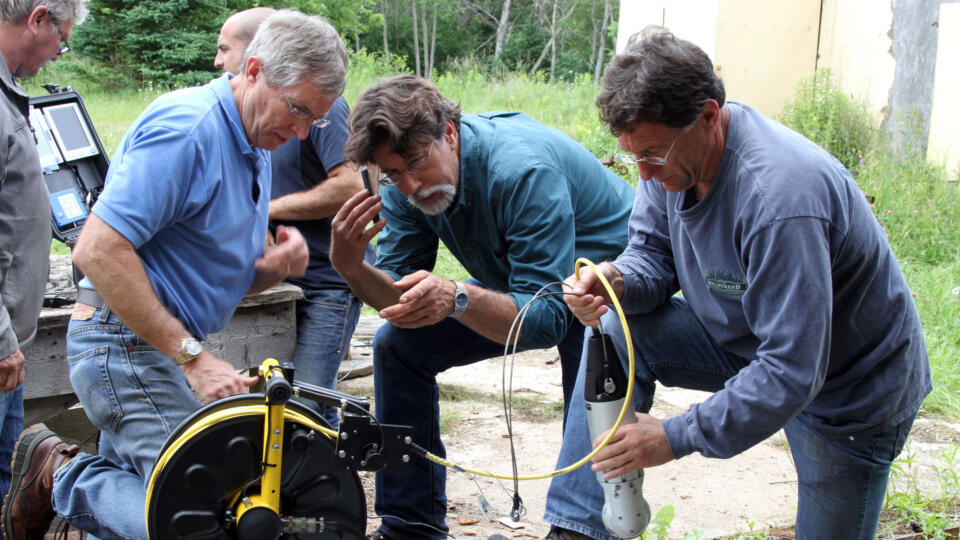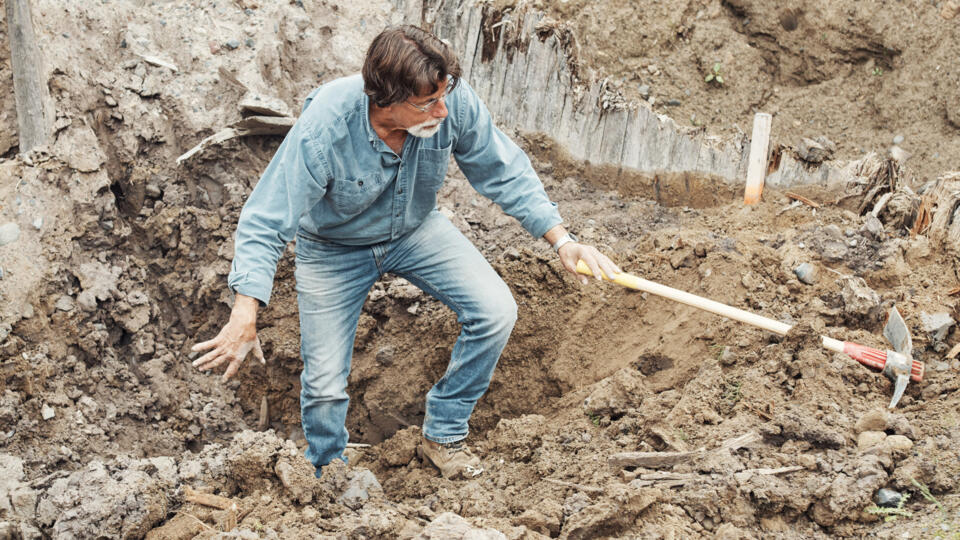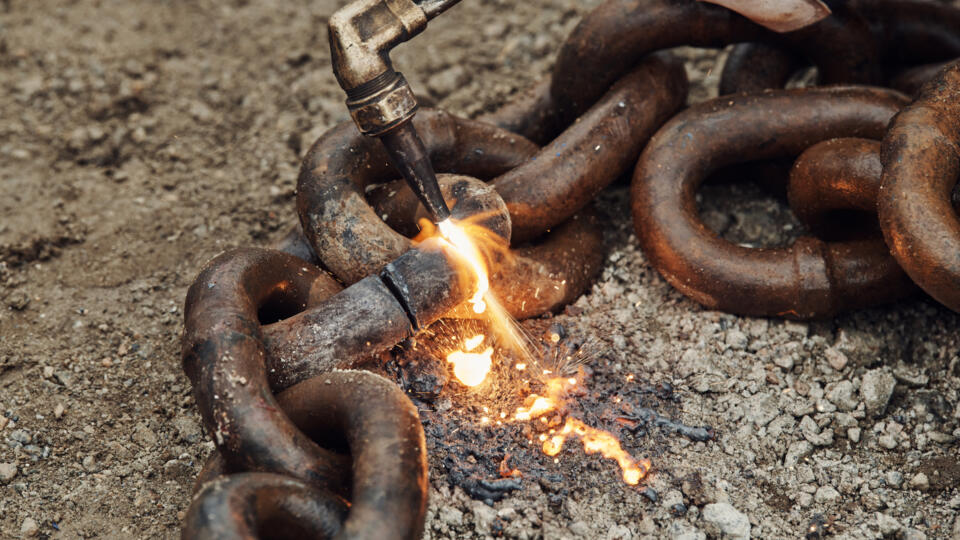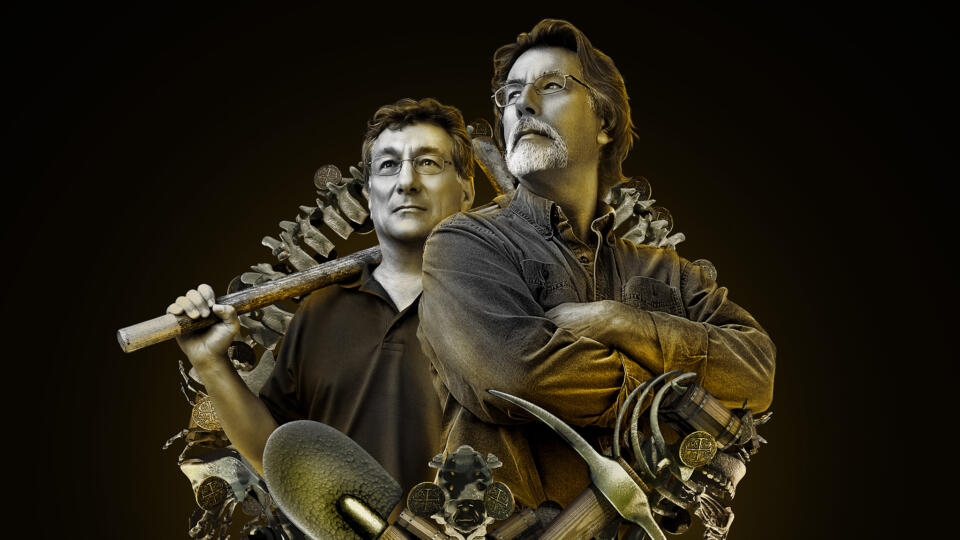Watch full episodes of The Curse of Oak Island online now. Follow the links in this article to see what happened on each episode.
For the better part of two centuries, treasure hunters have been trying, and failing, to extract purported hidden treasure from the bottom of the Money Pit on Canada’s Oak Island. And though the prospect of finding millions of dollars’ worth of buried treasure is exciting enough, there are also dozens of theories attached to the island and its supposed riches. They range from the island being the home of Captain Kidd’s buried treasure to the land's supposed connection to ancient secret societies such as the Freemasons and Knights Templar—and everything in between.
Here are the top 21 theories about the mystery of Oak Island.
The Captain Kidd Theory
This theory, floated in Season 1: Episode 1 (“What Lies Below”), when the Lagina brothers first took over ownership of the island, holds that Captain Kidd buried his treasure on the island and then cursed it and booby-trapped it, thwarting centuries of treasure hunters. The team explored the matter further in Season 4: Episode 7 (“All That Glitters”), talking things over with author Randall Sullivan.
The Sir Francis Drake Theory
In Season 5: Episode 7 (“The Lot Thickens”), historian Paul Speed suggested that a scrap of leather, purportedly used in the bookbinding process, is tied to the 16th-century privateer and his looting of hundreds of millions of dollars’ worth of treasure from a Spanish galleon. This theory further suggests that Drake himself is buried on the island. “When you hit metal, you might have hit his coffin,” said Speed.
The Cathar Theory
The Cathars were a Christian sect active in Europe during the early Middle Ages. In Season 2: Episode 6 (“Seven Must Dye”), the team explored the possibility that the group had access to many of Christendom’s greatest treasures, including the Holy Grail and the Ark of the Covenant. This theory holds that Cathar monks handed off some, if not all, their treasures to the Knights Templar, another medieval Christian sect, for safekeeping. When the Templars were disbanded, their treasures were supposedly secretly removed from Europe—possibly to Oak Island.
The Marie Antoinette Theory
Marie Antoinette was the Queen of France who lost her head in the French Revolution. Franklin Delano Roosevelt was the 32nd President of the United States. So what is the connection between the two, and what do they have to do with Oak Island? In Season 4: Episode 11 (“Presidential Secrets”), the team spoke with a historian who discussed Roosevelt’s belief that the lost crown jewels of France wound up buried on Oak Island. This theory holds that Marie Antoinette’s gems were given to a servant who spirited them away, possibly to wind up on the island.
The Shakespeare Theory
In Season 1: Episode 4 (“The Secret of Solomon’s Temple"), the brothers met with Petter Amundsen, a Freemason who claims that Shakespeare wrote a coded map that leads to Nova Scotia, not far from Oak Island. He suggested that seemingly random capitalization in Shakespeare’s works, misspelled words and out-of-sequence page numbering might be the code that leads to the treasure—a trove containing not only priceless gold, silver and jewels, but even some lost Shakespeare manuscripts.
The South Shore Theory
According to this theory, 16th-century philosopher and statesman Sir Francis Bacon buried “something incredible” on the island and enacted booby traps above it. In Season 6: Episode 13 (“The Paper Chase”), the brothers met with author Randall Sullivan, who speculated that a book of Bacon’s philosophical writings, published after his death, references the seas, pits, water and shafts—all bearing similarities to the booby traps in the Money Pit.
The Dual Cipher Theory
In Season 2: Episode 5 (“The 90-Foot Stone”), Rick and Marty met with Daniel Ronnstam, a cryptographer who believes that a slab of stone found at a depth of 90 feet holds a different set of clues to the treasure than previously thought. In 1949, Reverend A.T. Kempton, using a simple substitution, determined that the stone reads, “FORTY FEET BELOW TWO MILLION POUNDS ARE BURIED.” Ronnstam, however, believes that the cipher is actually two codes in one, including both the original English reading and a Spanish version that, when translated into English, reads, “AT 80FT GUIDE CORN LONG NARROW SEA INLET DRAIN”—supposed instructions on how to beat the booby traps that flood the pit.
The Money Pit Is Just A Decoy Theory
In Season 3: Episode 11 (“Sword Play”), Rick and Marty met with Mike and Sean Herold, a team of engineers who believe, based on the research of a distant relative who explored the island decades ago, that the Money Pit was a red herring, intended to lead treasure-hunters away from the actual site of the booty. They suggest the real site is just adjacent to the Money Pit, based on the placement of stones. Unfortunately, since those stones were destroyed by earlier expeditions, Rick and Marty had to approximate where to look, and came up empty.
The Star Map Theory
In Season 6: Episode 7 (“Rock Solid"), astrophysicist Dr. Travis Taylor met with the team. Taylor believes that symbols used by Freemasons, as well as a map of the constellation Taurus, overlaid onto a map of Oak Island, reveal that the treasure is on the western side of the island. A brief expedition to some locations suggested in Dr. Taylor’s research failed to turn up anything conclusive.
The Nolan Theory
Fred Nolan, who explored the island and its mysteries for a few decades beginning in the 1950s, believed the man-made carvings and other markings on the island formed a perfectly symmetrical cross, believed to have originated with the Knights Templar, the Christian warrior monks who amassed huge wealth while serving as bankers to Europe’s most powerful medieval kings. In Season 3: Episode 7 (“The Missing Peace”), the team got permission from Mr. Nolan to investigate areas he believed could hold clues to the treasure. A core sample taken at the site revealed a possible void beneath the surface, a find that energized the elderly Mr. Nolan, but failed to yield treasure.
The Sunken Ship Theory
Is it possible that a merchant or pirate ship was deliberately sunk, then buried in quicksand on Oak Island? It’s a prospect explored in Season 3, when Fred Nolan, who believes this theory, presented Rick with evidence of a sunken ship in a swamp on the island. He also believed that the swamp was man-made, deliberately built to obscure a ship buried beneath its depths. In Season 4: Episode 3 (“Swamp Things”), the team went out into the swamp with a professional diver, and found a plank of wood with knots in it, suggesting it had come from a ship. The theory will likely be explored further in Season 7.
The Little Mash Theory
Treasure hunter Gary Clayton met with Rick and Marty in Season 4: Episode 13 (“One of Seven”). Gary owns Little Mash Island, a tiny spit of land a few hundred yards north of Oak Island, which he believes was man-made, possibly by Lord George Anson, an 18th-century British naval commander. Clayton believes there’s a tunnel between his island and Oak Island—with a possible connection to where the purported treasure was buried.
The Portuguese Templar Theory
Several theories suggest that the treasure is tied, in one way or another, to the wealthy and secretive Knights Templar. In Season 3: Episode 4 (“The Overton Stone”), the team traveled to the nearby town of Overton and met with historian Terry Deveau, who believes that a large carved boulder known as “The Overton Stone” commemorates a friendship between Europeans and a local tribe known as the Miꞌkmaq. Deveau thinks the stone carvings were made by a group of Templars who came to the region from Portugal—and who possibly hid treasure on Oak Island.
The Havana Theory
Metal-detection expert Gary Drayton, while exploring Lot 24 in Season 4: Episode 8 ("The Mystery of Samuel Ball”), found a button, coins and a chunk of lead, all believed to date from the 1700s. According to Oak Island historian Charles Barkhouse, the items suggest evidence of a British encampment on the island, possibly following the 1762 British siege of Havana, Cuba, then an important Spanish naval base. The theory goes like this: During the siege, the British looted untold millions in gold from the Spanish, who had themselves stolen it from indigenous Cubans. Then, as the precious cargo was transported north to Halifax, “rogue British naval officers” ordered the ship to Oak Island, where they had the treasure buried.
The Aztec Gold Theory
Author and historian John O’Brien met with the team in Season 3: Episode 6 (“Carved in Stone”), raising the intriguing possibility that Mesoamericans made their way north to Oak Island and buried some of their mythic gold and silver treasure there—to keep it from being stolen by the Spanish.
The Christopher Columbus Theory
Researcher Jeff Irving met with the team during Season 3: Episode 9 (“Columbus Day”), suggesting that the Oak Island treasure may in fact be the Ark of the Covenant, the Old Testament artifact that supposedly contains the stone tablets on which the Bible’s Ten Commandments were written. Irving believes Columbus was connected to the Templars, who ordered the Ark smuggled out of Jerusalem, and that the explorer may have somehow been involved in their efforts to spirit it away to the New World—Oak Island specifically.
The Knights Baronet Theory
In another variation on the Knights Templar theory, Scottish author and historian James McQuiston in Season 6: Episode 20 (“Short Days and Tall Knights”) laid out evidence for the idea that North American descendants of Scottish-based Templars, whose sect went by the name “Knights Baronet,” were among those depositing treasure on the island over the centuries.
The Enochian Chamber Theory
In the Old Testament, Enoch was the great-grandfather of Noah, the man who built the Ark on God’s command. An ancient series of texts used by Freemasons, known as “The Legend of Enoch,” claims that he built an underground chamber to save all the world’s knowledge and treasures from the coming Great Flood. Author Alan Butler met with the team in Scotland, in Season 6: Episode 6 (“Precious Metal”), to explain this belief that the Knights Templar followed Enoch’s lead and built the Money Pit to hold great treasure. In Season 7, the team promises to look more closely at the island’s swamp for possible clues to an Enochian Chamber beneath.
The Zena Halpern Theory
Zena Halpern, one of the myriad authors, treasure hunters, researchers and theorists who have lent expertise to the Lagina brothers’ team, spoke in Season 4: Episode 1 (“Going for Broke”) about a book she’d written, which details supposed 12th-century voyages made to the island by the Templars. In Season 5: Episode 10 (“The Signs of a Cross”), Rick found a lead cross with a loop at the top, like those used by the Templars—purportedly the first physical evidence of Templar activity on the island.
The Rochefoucauld Theory
According to this theory, a French nobleman and naval captain named Jean-Baptiste Louis Frederic de La Rochefoucauld, whose family had historic ties to the Knights Templar, was reportedly dispatched with the French Armada to Nova Scotia in the 1700s. In Season 5: Episode 10 (“The Sign of the Cross”), historian Doug Crowell explained to the team that he found evidence in a library that the fleet, led by Rochefoucauld, was carrying treasure. Zena Halpern’s map mentions Rochefoucauld, and a ship’s log purportedly mentioned burying the vessel’s treasure in a pit.
The Founding Fathers Theory
This theory also references Zena Halpern’s map and the name “Rochefoucauld.” As researcher Bruce Lindahl and treasure hunter Justin Cannady explained to the team in Season 6: Episode 22 (“Lost and Founding”), American founding fathers Benjamin Franklin and Thomas Jefferson both had connections to Rochefoucauld’s son, Louis Alexander Rochefoucauld. Lindahl and Cannady raise the possibility that Louis Alexander told the prominent colonists about the treasure, so they could finance their war efforts against Great Britain. And in an intriguing twist, the researchers suggest that all the families, both French and American, had ties to the Freemasons and Templars.







